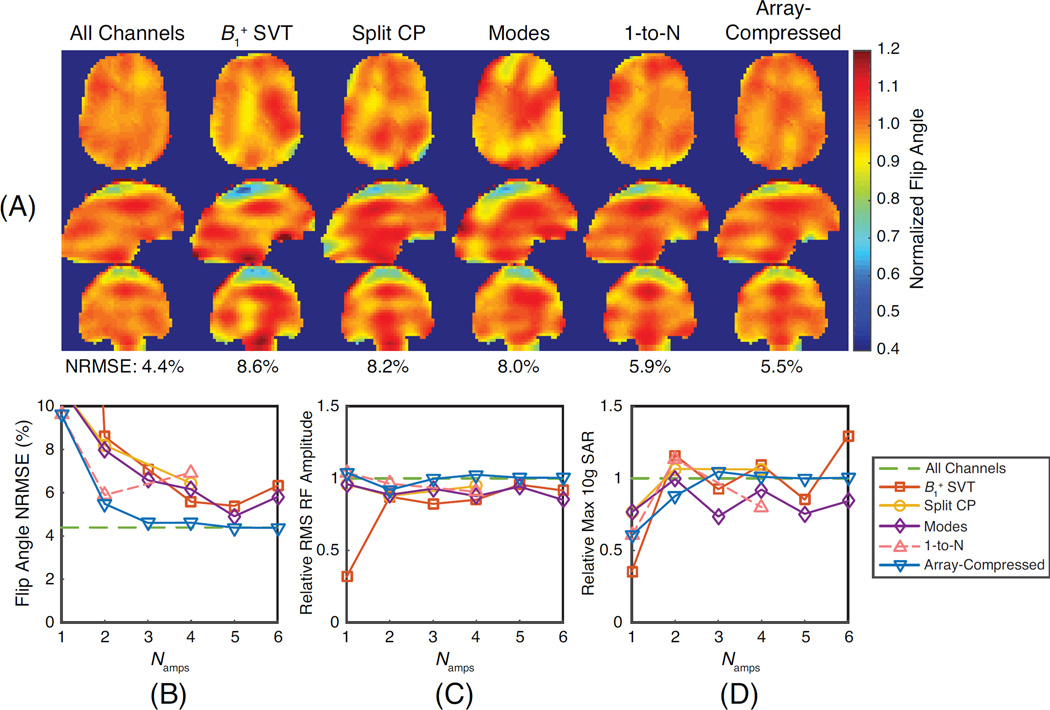Figure 6.
kT-Points small-tip-angle excitation pulse design simulation results. (a) Simulated flip angle patterns from three orthogonal planes of the brain, for pulses design with all channels and with two channels (Namps = 2) using each coil combination method. Each plane was taken from the middle of the brain. (b) Flip angle NRMSE, (c) relative RMS RF amplitude, and (d) relative maximum 10-gram local SAR for each method as a function of the number of compressed channels (Namps). The all-channel results appear across the plots for reference.

